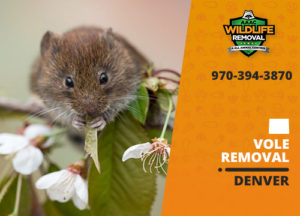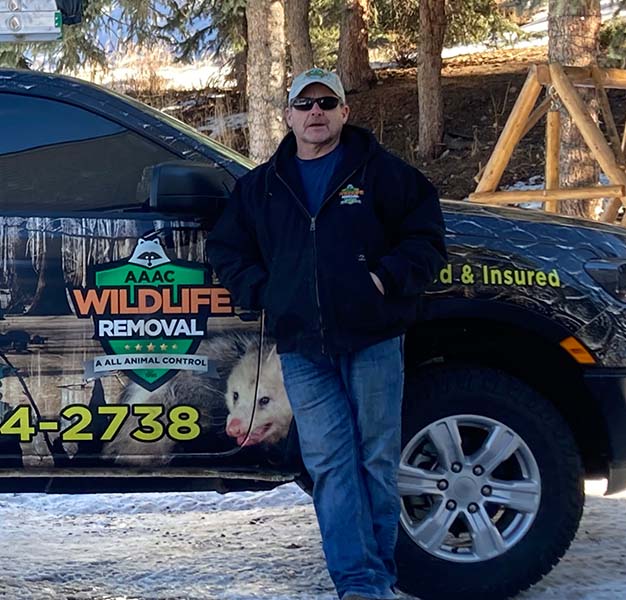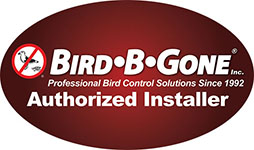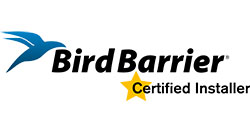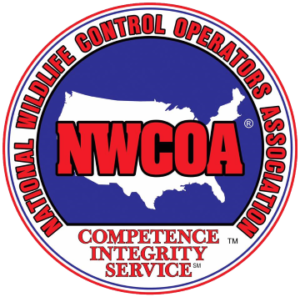Voles are one of the most common pests we are called to remove from homes and businesses in the Denver area. They are small, mouse-like creatures that can cause a lot of damage to property. They live under porches, decks, and crawl spaces.
These critters like to create small holes in the ground. They can also damage landscaping and eat roots of trees, plants, and other vegetation in your yard or garden. If you have problems with voles, Call AAAC Wildlife Removal so we can help you get rid of these pesky rodents.

Voles in the Yard
Voles or pine mice are small rodents that can be a real nuisance in yards and gardens. Meadow voles, the most common type, are about five inches long and weigh half an ounce. They have reddish-brown fur on their back with a gray or whitish belly.
These tiny animals are the bane of gardeners and homeowners alike. They can quickly destroy vegetation and create holes in your lawn.
These rodents are notorious for creating networks of deep tunnels underground. They’ll wreak havoc on your lawn or garden if left unchecked. Rodent control should commence as soon as you suspect a vole infestation.
Vole population can explode very quickly, so it is important to deal with the problem as soon as you notice their presence.
Problems and Damages Caused by Voles
The problem with voles is that they can cause a lot of damage in a short amount of time. They are always hungry and are active day and night. They can quickly eat through the roots of your ornamental plants and trees, as well as your vegetables and fruits.
They’ll turn up the soil as they burrow and create mounds of dirt. This can be a real eyesore in your yard or garden.
In addition to the damage they can do to your property, voles can also be a health hazard. They are known carriers of fleas and ticks, which can transmit diseases to both humans and pets.

Difference Between Voles and Moles
Voles are often mistaken for moles because they both create tunnels underground. But there is a huge difference between these two animals. Voles are rodents while moles are small mammals. Voles are about five to eight inches long, with a tail that is about two and a half inches long. They have small ears that are hidden in their fur.
Moles, on the other hand, look very different from voles. They can grow up to nine inches in length, including the tail, which is only one and a half inches long. They have large, broad front paws that are covered in hair.
Voles create tunnels to get to plant roots which they eat. Moles, however, create tunnels and mounds to find food like worms, grubs, and other insects. They are not interested in eating the roots of plants or vegetables at all!
Signs of Vole Activity
It may not always be apparent that you have voles. These critters can be difficult to find since they spend most of their time underground or in burrows beneath the ground surface. You may see signs of damage before noticing any actual vole activity, though these two things are usually related. Here are a few signs that you may have voles in your yard:
Holes on the ground
Usually about an inch in diameter. They can be found anywhere, but are often concentrated around the edges of a property or around the base of trees and shrubs.
Gnaw marks on young trees and plants
Voles like to chew on the bark of young trees and plants. They’ll gnaw around the base of a tree until it’s killed, then move onto another one nearby.
Runways in grass
You’ll notice paths about 1″ to 2″ wide that voles have traveled on. These runways will be smooth and well-worn since they’re used regularly by voles.
Dead plants
Voles love to eat the roots of a plant. If you see a dead plant with no evidence of disease or insect damage, it may have been killed by voles.
Exposed stems on bulbs
Voles enjoy eating the fleshy part of a bulb. If you notice that the stem of a flower or bulb is exposed, it’s likely because voles have been feeding on it.
Vole Prevention
Like most wildlife that come to your home, these pests are attracted to food, water, and shelter. You can take some steps to make your property less appealing to voles and help discourage them from taking up residence.
Here are a few tips for preventing voles:
Yard upkeep
Removing woodpiles and debris as well as keeping bushes and grass trimmed will help to remove potential shelter for voles.
Secure bird feeders
If you have a bird feeder, make sure to keep the ground clean and free of spilled seed. This will help to prevent rodents, including voles, from being attracted to your property.
Tree guards
Wrap a wire screen around the base of any young trees on your property. This will help to prevent voles from chewing on and killing them.
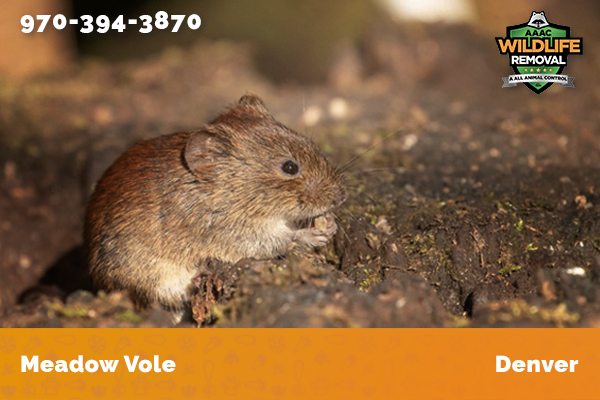
How to Get Rid of Voles
There are a few methods for getting rid of voles that you can try yourself. These methods may be effective, but they don’t always work and it’s possible for them to do more damage than good.
Here are a few ways to get rid of voles:
Exclusion
Wire cages are pretty effective at protecting trees and shrubs from vole damage. Place a wire cage around any plants you want to protect and extend the bottom of it beneath the soil, burying it so voles can’t get underneath.
Repellants
Predator urine, like coyote or fox urine, can be used to repel voles. It’s not a 100 percent effective method and may need to be replaced often in order for it to work well.
Rodenticides
This is a chemical that kills rodents. It’s effective, but it can also be dangerous to other animals and humans if not used properly. Rodenticides should only be used as a last resort and with caution.
Traps
Snap traps are an option for getting rid of voles. These are tricky though because they don’t always catch the right critter and can end up harming non-target animals.
Hiring a Professional
If you’re uncomfortable trying any of these methods or they don’t seem to be working, the best option may be to call in professional vole control services. These wildlife removal experts have the experience, knowledge, and tools to deal with voles safely and effectively.
Voles are clever little creatures that can be difficult to get rid of. If you’re dealing with a vole infestation, it’s best to call in a pest control services expert who knows how to control voles and how to get rid of them.

Vole Removal Denver
AAAC Wildlife Removal of Denver is the best choice for vole control in Denver. We have over 15 years of experience dealing with voles and other nuisance wildlife, so you can rest assured that we’ll be able to effectively remove them from your property.
Vole control should be initiated as soon as you notice the pests on your property. The longer voles are allowed to stay, the more damage they’ll do and the harder it will be to get rid of them.
Control and removal of voles should only be done by professional pest control companies who know their habits and have the tools to get rid of them effectively.
Our experts have the tools, knowledge, experience, and skills necessary to completely remove voles from your property. We also offer exclusion services so they can’t get back in again.
Contact AAAC Wildlife Removal of Denver today for effective vole control!

Dead Vole Removal
Dying voles may sometimes roam and crawl inside your home. This is possible when the pest has been poisoned or attacked by a predator.
Voles that die inside your house present different problems than live voles. You need to remove them quickly because they will decompose and begin to smell really bad when they start to rot.
Removing a dead vole from your home can be tricky, If the vole is inside a wall or other enclosed space, you’ll need to cut open the drywall or other surface to get to it.
For the typical homeowner, this task is just too unpleasant and difficult, which is why it’s best to call a professional wildlife removal company. At AAAC Wildlife Removal, we also remove dead animals from attics, walls, and other locations.

Wildlife Damage Repair
Aside from being experts at animal removal, AAAC Wildlife Removal offers full-service wildlife damage repair. We can help you restore your property to its original condition after a vole infestation.
All our specialists are masters of carpentry and home repair, so we can handle any repair job, big or small. We also have extensive knowledge of Colorado’s building codes and will make sure all the repairs are done to code.
If a vole or other animal has damaged your home, please call us today to schedule a damage inspection!
Service Areas
Cities such as Bow Mar, Centennial, Cherry Hills Village, Colorado Springs, Commerce City, Denver, Edgewater, Evergreen, Federal Heights, Foxfield, Franktown, Fort Collins, Glendale, Golden, Greenwood Village, Gun Barrel, Highlands Ranch, Indian Hills, Lafayette, Lakewood, Littleton, Longmont, Loveland, Louisville, Northglenn, Parker, Sheridan, Sherrelwood, Superior, Thornton, Westminster and Wheat Ridge, CO all experience Vole control and removal problems.
Shrews and Voles can be found in all of the following county or counties: Adams, Arapahoe, Boulder, Broomfield, Denver, Douglas, Elbert, Jefferson and Park. AAAC Wildlife Removal will provide Vole control and removal services in these counties.
AAAC Wildlife Removal of Denver is your Vole Control Specialist. If you have a Shrew or Vole control or removal need, call us today!

